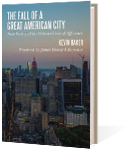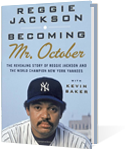THE WORLD ON SUNDAY
Graphic Art in Joseph Pulitzer’s Newspaper
(1898-1911)
by Nicholson Baker and Margaret Brentano
Bulfinch Press
134 pages
We think that we advance. Instead, we merely abandon the beauty of the past. Nothing could make this more clear than Nicholson Baker and Margaret Brentano’s magnificent, coffee-table collection, The World on Sunday.
The “World” was Joseph Pulitzer’s New York World, which once a week became “THE GREAT SUNDAY WORLD,” a supplement-stuffed extravaganza that, as Baker puts it, “weighed as much as a small roast beef,” and brought the worthy, bourgeois custom of lounging over the Sunday papers into its own. Baker and Brentano have included pages from nearly every section of the paper, including the classifieds and the department-store ads, but most of their selections focus—and rightly so—on the magazine and humor sections. From them pour forth one sumptuous, antic, multi-colored spread after another; not only a slew of very eccentric, very funny editorial cartoons and comic strips, but also breathless features that celebrate nearly every marvels of the age—from robber barons to Arctic explorers, bathing beauties to new immigrants; and bridges, and world’s fairs, and subways, and skyscrapers, and airships, and the most amazing new phenomenon of them all, Teddy Roosevelt.
Above all, these pages show how great a newspaper can be when it doesn’t take itself too seriously. The World was the “paper of record” for its time, at least in this country; its Sunday edition read by over half-a-million Americans. Yet its editors never let their ambition overwhelm their sense of awe, or giddy wonder at the dizzying new world around them. There were slides into the sensationalist—a spread on “spirit pictures”; one that states “Scientists Now Know Positively That There Are Thirsty People on Mars”; a lurid, war-mongering cartoon on Spanish atrocities in Cuba. Yet in this era of yellow journalism, a surprising amount of space was dedicated to very intelligent efforts to help the World’s readers grasp the fantastic, constantly changing city and country they lived in. Here are articles on “The Busiest Hour on Earth”—a Manhattan rush hour—or the “12 New Americans Every Minute” then pouring in through Ellis Island, or how electricity was making Broadway “The Street That Knows No Night,” that immediately absorb even the modern reader.
All of this raises the question of why the papers, and all other news media, are so drab by comparison today. One might argue that the period Brentano and Baker have chosen for their selection—from the installation of the World’s “marvellous” color printing press in 1898, to the death of the paper’s publisher and animating genius, Joseph Pulitzer, in 1911—marked a last, pre-World War I age of innocence and incredulity. But this only begs the question. Surely marvels still abound today; why are we so bad at celebrating them?
The key, like all the heady energy of the World, is to be found in its graphics. The battalion of brilliant artists and designers that Pulitzer assembled epitomized all that has been lost in American popular culture, the idiosyncratic, the nuanced; the personal, subjective vision. Consider just one illustration here (and far from the best one), Dan W. Smith’s 1908 magazine cover on an upcoming “auto carnival” in New York, celebrating “the Tenth Birthday of the Automobile.” Smith has placed his automobiles in a luminous night scene at Columbus Circle, with his cars festooned with glowing, Japanese lanterns, and besieged by a crowd of eager swells. It is a picture almost comparable to a Toulouse-Latrec poster as a cultural artifact, creating a palpable desire to be there. Contrast it with what would be served up in its place, under the mindless, sterile design ideology of today: One more shapeless modern car, set against some vast, desolate landscape, perhaps with a skinny model in a long gown standing next to it. Gee.
All that one could have asked from Baker and Brentano is for a more extensive version of Brentano’s always intelligent and insightful captions. But as Baker makes clear in his introduction, a large part of their goal in publishing The World On Sunday was to further their ongoing crusade to save original periodicals and newspapers from librarian, space-saving fanatics, bent on mutilation and monochromatic microforming. To this end, they have mostly let the World speak for itself, and it has made their argument brilliantly for them.









